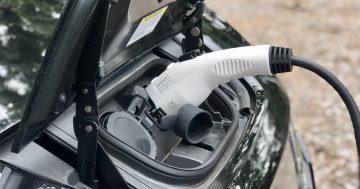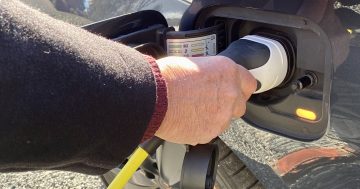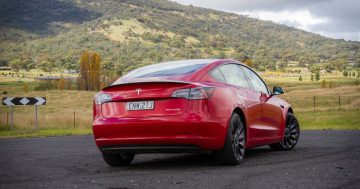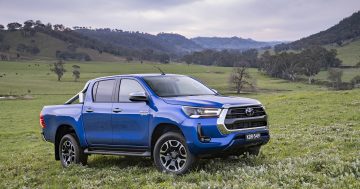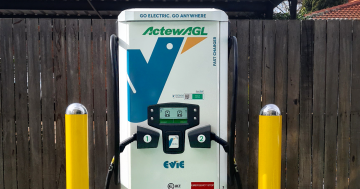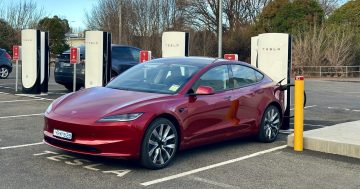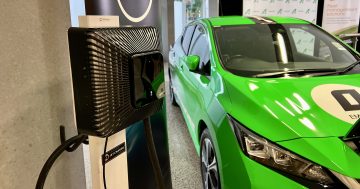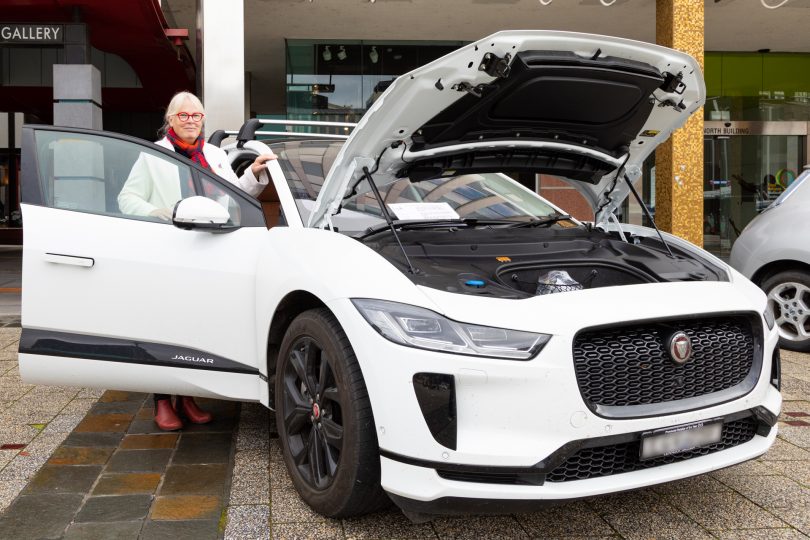
Canberran Sonja Skagen with her Jaguar I-Pace, Jaguar’s first all-electric car. Photo: Michelle Kroll.
The Federal government has handed down its long-awaited electric vehicle (EV) strategy, including plans for a fuel-efficiency standard, more public charging stations and local recycling of batteries.
But is there room for improvement? The ACT Branch of the Australian Electric Vehicle Association (AEVA ACT) – made up of local EV owners – has some ideas.
“We certainly welcome the strategy and the government’s willingness to put words into action,” chair Richard Czumak says.
“But we would like to see quicker action on fuel efficiency standards – that’s critical – and think there are some issues which could have received a little more focus.”
Climate Change and Energy Minister Chris Bowen and Infrastructure, Transport, Regional Development and Local Government Minister Catherine King launched the National Electric Vehicle Strategy last week on behalf of the Federal Government.
The 56-page document is described as “a comprehensive roadmap to ensure Australians have a better choice of electric vehicles, and encourage greater use of cleaner, cheaper-to-run vehicles”.
The government will collaborate with the states and territories over the next three years to ensure a “national approach” to six areas ahead of a review in 2026.
These cover standards for charging infrastructure and “acoustic vehicle alerting systems … to reduce potential pedestrian collisions”, the sharing of information on charging hot spots, fresh incentives to make EVs more affordable, the roll-out of more chargers across regional Australia, EV targets for government fleets, and “nationally consistent information on the benefits and realities of driving an EV in Australia” to help households and businesses make “informed purchasing decisions”.
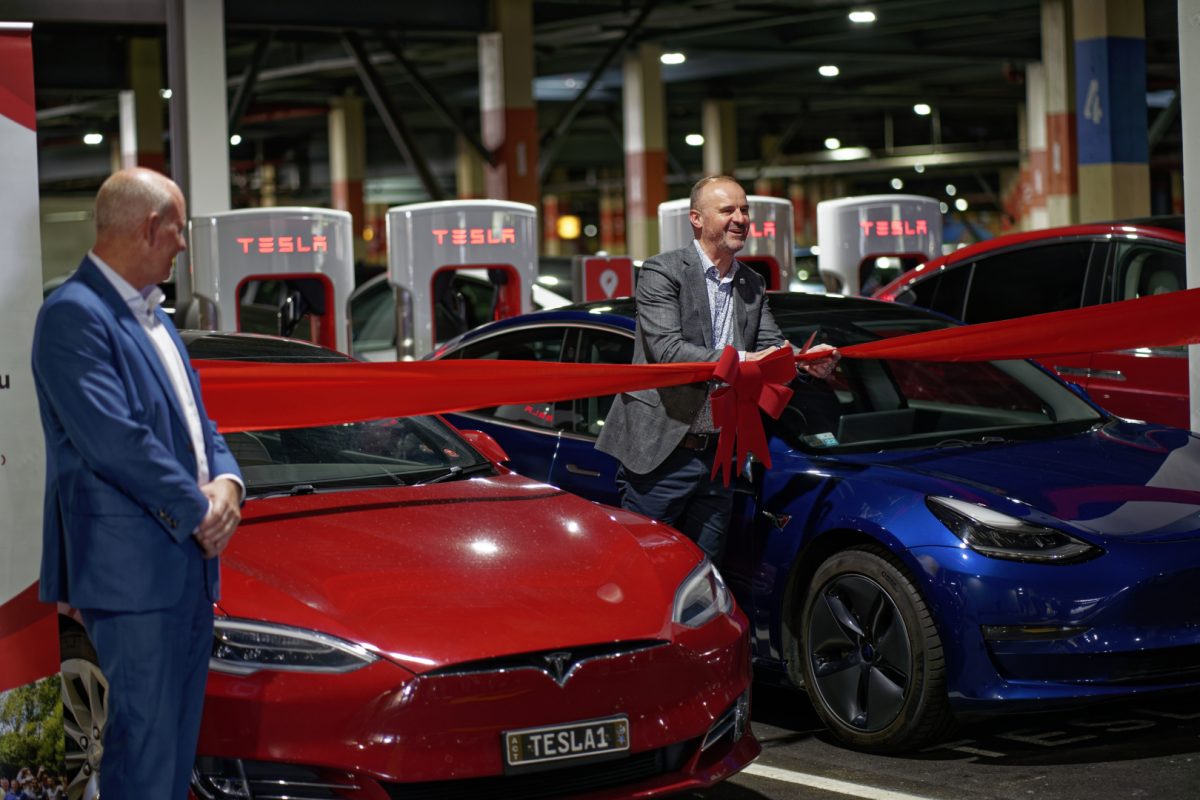
ACT Chief Minister Andrew Barr and South.Point owner Rob Ell opening new Tesla Superchargers at South.Point, Tuggeranong. Photo: South.Point.
Specifics for the big one – national fuel efficiency standards – are a few months away as the government consults with the industry on the impacts of cleaning up Australia’s high-sulphur fuel.
As it stands, Australia is one of only two developed nations in the world not to have fuel efficiency standards, but there are louder and louder calls for the country to mirror Europe’s Euro 6 standard, where car makers are only allowed to emit an average of 95 grams of CO2 per kilometre across their range. This encourages brands to introduce more EVs to ‘atone’ for the carbon sins of higher-emitting models.
The strategy also flags equipping interstate highways with hydrogen refuelling stations to speed up the transition for heavy vehicles.
This is the first area where Richard has his doubts, citing Tesla and Volvo’s work in the area as proof batteries might hold more potential for transporting freight.
“Battery technology is advancing at such a rate hydrogen may not be viable as long-term technology,” he says.
“We’re seeing brands bring out increasingly capable heavy-duty trucks, with either battery-swapping technology or special charging systems that allow them to be charged much faster than the average vehicle.”
Richard would also like to see Australia’s parallel-import laws relaxed, describing it as “one area that could actually increase affordability”. This would allow individuals to import more EVs, such as the Volkswagen I.D.3, without waiting for VW to officially add it to the local range.
“We see this with the Nissan Leaf, a very popular vehicle in Canberra and very economical and easy to import.”
Richard says the strategy was also silent on the electrification of mass transport options, such as how to support more electric bus fleets.
Here in the ACT, the local government is working to the Zero Emissions Vehicles Strategy 2022-30, released in July last year. A key part of this is banning the sale of new fossil-fuel-powered cars from 2035, but it also outlines an expansion of the ACT’s public charging network to at least 180 chargers by 2025 and changing the Territory Plan to make sure the parking spaces of new multi-unit developments are “EV-ready”.
This is on top of the current financial incentives for EV buyers, including stamp-duty waivers, free registration for two years and zero-interest loans of up to $15,000.
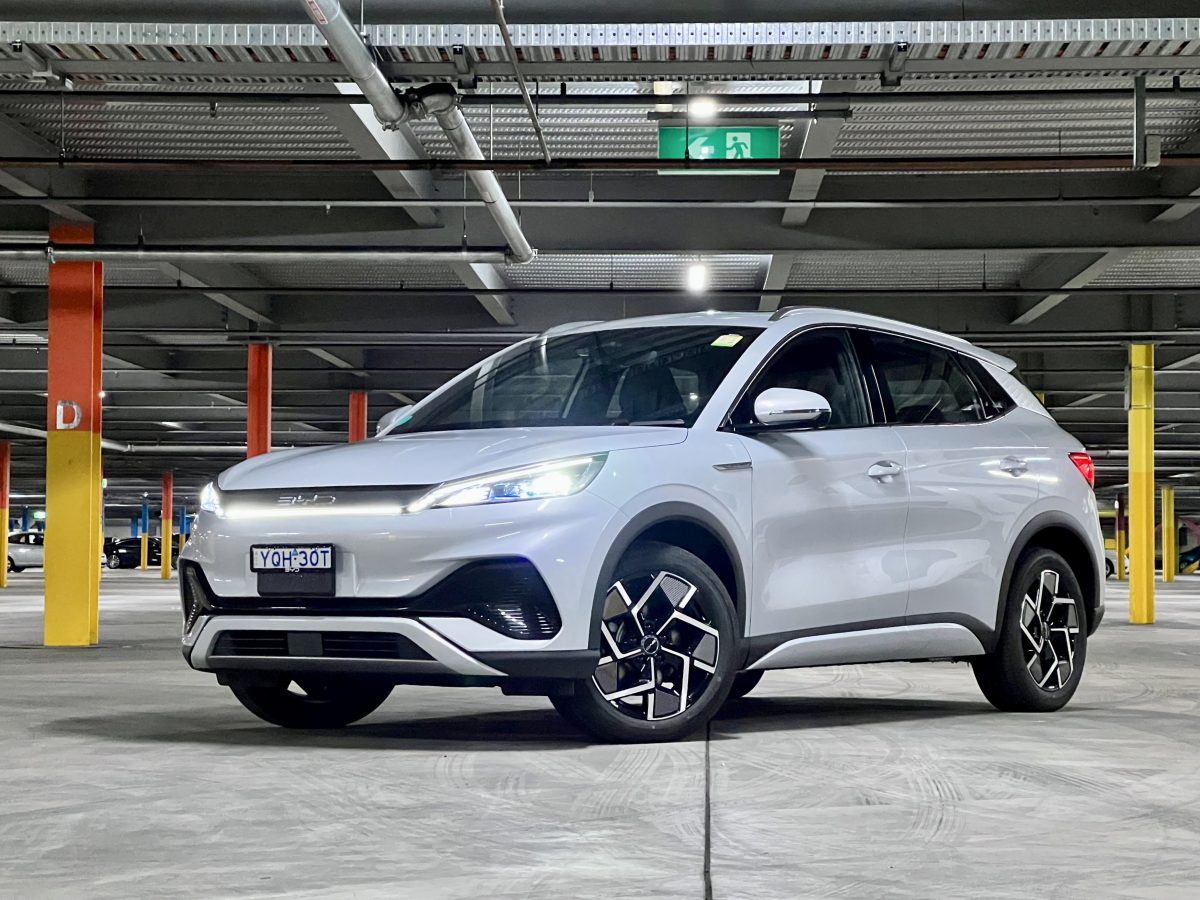
The BYD Atto 3, an up-and-coming contender for one of the ACT’s best-selling EVs. Photo: James Coleman.
It seems to be working.
As of 17 April, there are 4002 registered EVs in the ACT, and new data from the Australian Automotive Association (AAA) show EV sales have overtaken those of petrol-driven cars in the medium-sized car category for the first time on record.
Richard expects the city to continue to build on its reputation as “a little Norway” and for the number to increase to 5000 EVs within the next two months.
“It only took us 98 days to go from 3000 EVs at the beginning of the year to what we have now … solely because the conditions are right.”
The interplay between the number of EVs and chargers will continue to be a “game of chicken and egg” for some time yet. But as for all the used batteries, Richard says more will find new life as refurbished standalone units for households.
“It’s not an immediate problem, but over time, we will need to recycle the vehicles and the batteries,” he says.
“The batteries have quite a long life and we’re seeing the technology used increasingly to support the grid and provide the storage we need for renewable energy to provide a stable grid. I think the batteries will find a home quite readily once they’re taken out of a vehicle.”












